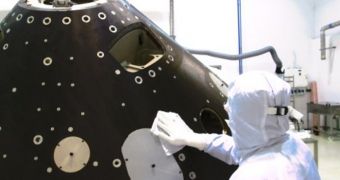Both the US National Aeronautics and Space Administration (NASA) and the European Space Agency (ESA) have programs in place to prevent the contamination of alien worlds with lifeforms originating on Earth. For ESA, this function is coordinated by the Planetary Protection Officer (PPO).
Gerhard Kminek is the current PPO at ESA, and his job is to make sure that all spacecraft heading for nearby planets are as clean as they can be before launch. Some species of microorganisms have a hardiness that is very difficult to put into words, so special measures are needed to kill them off.
One of the ways to ensure a clean environment both inside and outside of spacecraft is to regularly carry checkups of all clean rooms and launch facilities used for that particular project. A recent effort of this type has led to the discovery of a new bacterial species, which is only found in clean rooms.
That is, in itself, a remarkable finding, since these special rooms are designed with killing bacteria, microbes and other pathogens in mind. Clean-up protocols are very strict at these locations, and yet some microorganisms manage not only to survive, but flourish in adverse conditions.
A series of recent studies – used to confirm a theory called panspermia – indicate that bacteria can survive an ascent into space (and on boulders released by Earth following an asteroid or comet impact, no less), a long journey through the solar system, and reentering the atmosphere of another world.
Therefore, bacteria reaching Mars aboard our spacecraft is not only possible, but very likely. This has to be prevented at all costs, astrobiologists say, because otherwise we would have no way of knowing whether or not rovers such as Curiosity have actually detected alien life.
“We have a long-term program at ESA – and also NASA – to regularly monitor and evaluate biological contamination in clean rooms and on certain type of spacecraft,” says Kminek.
“That includes launch facilities at Kourou in French Guiana and Baikonur in Kazakhstan, and clean rooms at ESA’s ESTEC technical center in the Netherlands and of our industrial partners,” he adds.
“The aim is to quantify the amount of biological contamination, to determine its diversity – finding out what is there using gene sequence analysis, and to provide long-term cold storage of selected samples,” Kminek concludes.
All US spacecraft heading for outer space are checked by the NASA Planetary Protection Office before departing. The certification obtained from this Office is mandatory for receiving launch permission.

 14 DAY TRIAL //
14 DAY TRIAL //